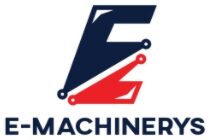The Federal Polytechnic of Lausanne has just welcomed a Navia, a small electric shuttle that moves freely without a driver! Be careful however, it can brake suddenly when its lasers detect a danger.
Visitors, students and other staff from the École Polytechnique Fédérale de Lausanne ( EPFL) may have been surprised to see a small electric shuttle pass by. No wonder … except that this machine developed by the French company Induct has no driver!
Navia, the name of the model, does not pretend to compete with the autonomous car of Google. The shuttle was specifically developed for the automatic transport of a maximum of 8 people in town, on the first or last kilometers of their journey, for example between their starting point and a deserted public transport. Passengers, after choosing their destination on a tablet touch, traveling up but relying on appropriate cushions. Better to hang on because sudden braking can occur at any time.
The shuttle is equipped with several systems allowing it to perceive its environment. A GPS indicates for example the zone where it is located, but hardly more, because the device is too imprecise. Fortunately, Navia can count on 4 laser rangefinders to constantly know the environment around it up to 200 m away (the information is updated 10 times per second). What’s more, on -board systems can differentiate a car , whose trajectory can be calculated, from a dogor a human with unpredictable reactions within a 50 m radius. Navia currently stops more or less suddenly, depending on the case, in the face of any irrational danger. Finally, stereoscopic cameras analyze traffic signs, ground markings, etc. in real time.
Navia ultra-fast wireless charging coming soon?
Two versions of Navia are currently planned. The first, the one presented in Lausanne, is equipped with a conventional lithium-polymer battery. It can follow predetermined routes chosen without constraint, with a maximum range of 150 km. The second model, which remains to be developed, will be equipped with capacitors associated with an “ultra-fast” charging system (15 to 20 s, the time taken by passengers to get on or off the vehicle). This model will always have to follow the same route in order to meet its induction charging stations at the right time, i.e. approximately every 500 m.
The shuttle has a top speed of 20 km / h. According to Christophe Cairoli, the director of operations at Induct, who spoke to Le Temps daily , at this speed the machine does not scare passengers or other road users (pedestrians, cyclists, etc.). The Federal Polytechnic of Lausanne should eventually host 6 shuttles on its 55 ha campus, as well as an Induct development and research center. However, Swiss laws should be changed so that these vehicles can circulate freely. Driverless vehicles are currently prohibited outside of clean sites.
